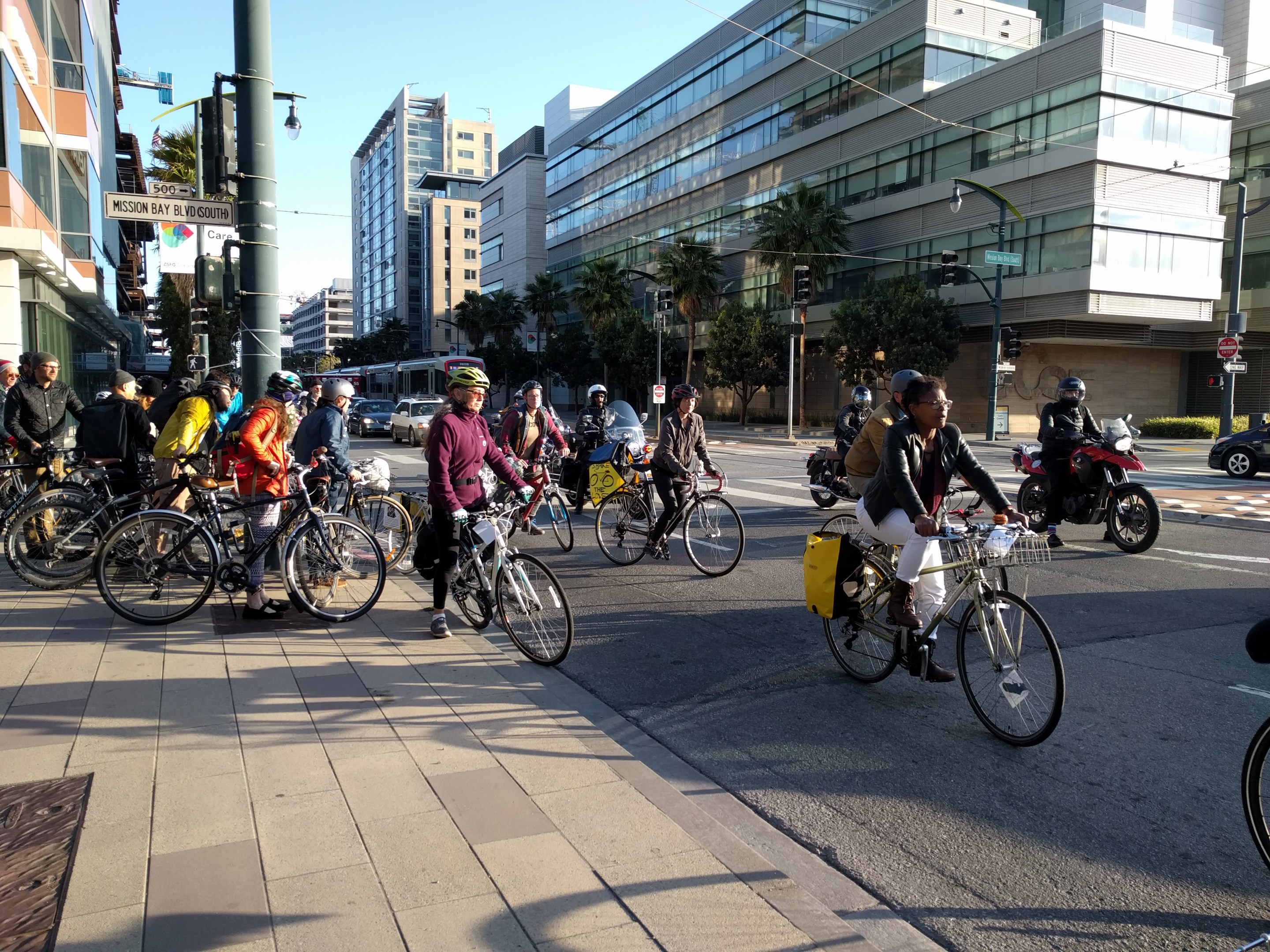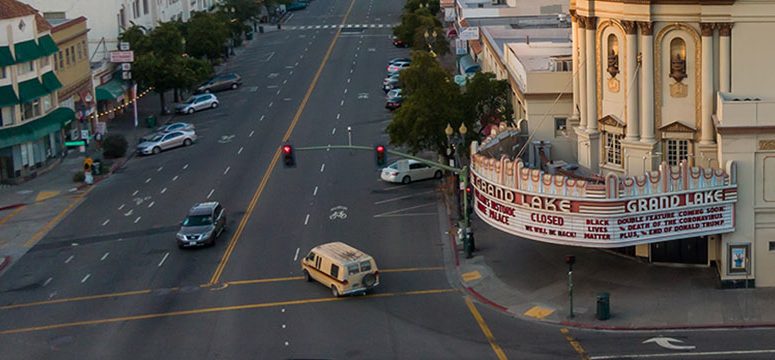"She did gorgeous street art," said Gail Schickele, remembering her friend and neighbor Diana Sullivan, who was killed in 2013 when she was run over by a cement truck while riding her bike near Third and King. Schickele reminisced about the time she walked out of her home and Sullivan had written 'happy birthday' to her on the sidewalk with colorful chalk. "Diana was so lovely and vivacious."
Schickele was one of about twenty people who participated in the "Ride of Silence" yesterday evening--the annual ride to remember fallen cyclists. It was her first time on the memorial ride, which circulates around the city, stopping at locations where people were hit or killed while riding their bikes.
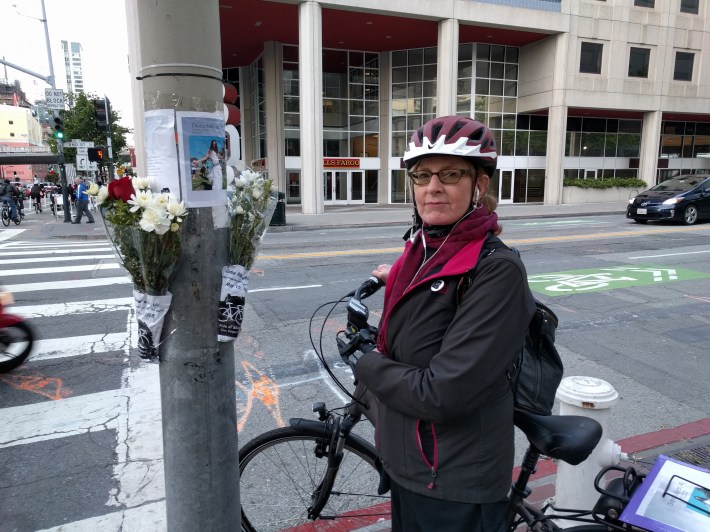
Before heading out from the Sports Basement on Bryant Street where the ride begins, participants shared refreshments, talked, and looked at pictures of the fallen.
"In exactly a week from today it will be the five-year anniversary from the day my son was killed. These deaths are preventable," said Julie Mitchell, a regular at the event. She co-founded the organization San Francisco Bay Area Families for Safe Streets. "It's going to take a lot of work, a lot of fighting." Mitchell is still too afraid of the conditions of San Francisco's streets to ride a bike; she follows the ride by car.
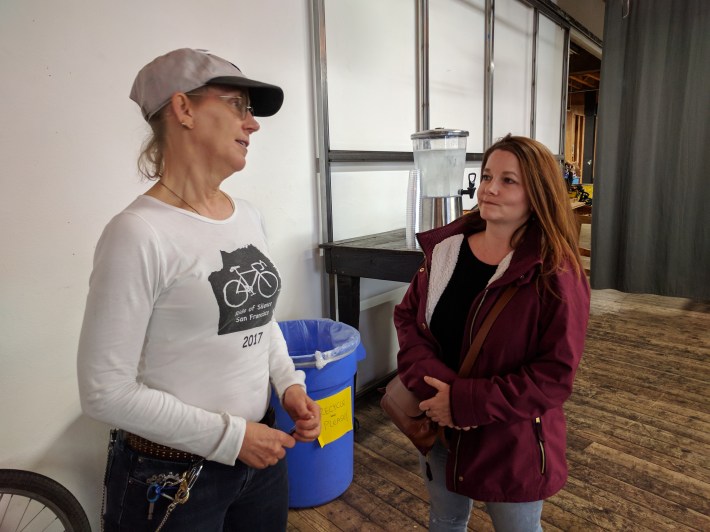
In 2017, the death rate for pedestrians and cyclists in San Francisco was lower than the previous year. Is that an anomaly or the results of hard-fought advocacy?
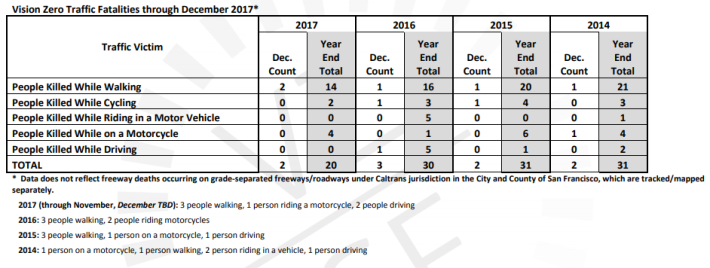
It's too soon to say. But that fact gave the people in the room reason to be hopeful. "In 2017 there were 20 people killed on our streets, in 2016 there were 30," said Brian Wiedenmeier of the San Francisco Bicycle Coalition. "Let's make sure [that decline] becomes a pattern." He stressed the importance of keeping up the pressure to fix the streets.
When it comes to the importance of keeping up the pressure, nobody knows it better than Antony Ryan, who has had two scrapes with death on the streets of San Francisco. In one of them, he was seriously injured when a car hit him while he was riding down Ocean Avenue, one of San Francisco's notorious high-injury corridors. Just last month, an elderly woman was killed at exactly the same location where he was hit, yet the intersection and street still have not been upgraded. "It's very frustrating...just the callousness of some people in the city," he said of city managers and bureaucrats who, in his view, allow dangerous conditions to persist.
"Policy makers should be doing better...nothing less than lives are at stake," said mayoral candidate Mark Leno, who was at the beginning of the ride.
The ride set out on its course around 6:30.
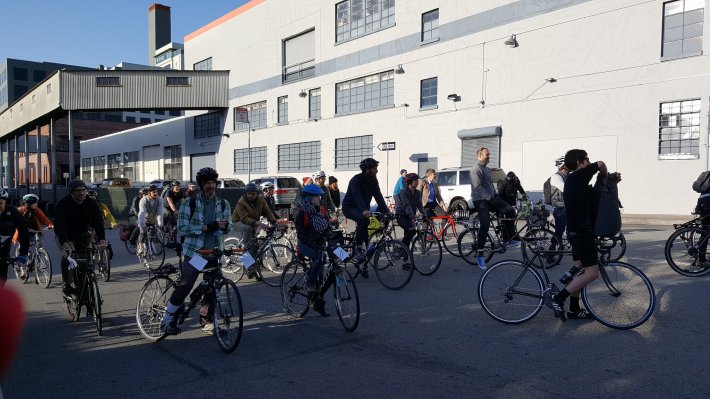
As the ride made its way around the city, examples abounded of some of the progress that's been made--such as the newly protected bike lanes in SoMa. But there were also examples of streets that are still dangerous, without protected bike lanes, and with dangerous intersections and substandard pavement. As one rider said, only if the progress on our streets continues--only if road deaths and serious injuries become truly rare events--will it be said that those who have fallen did not die in vain.
More photos of the ride below.
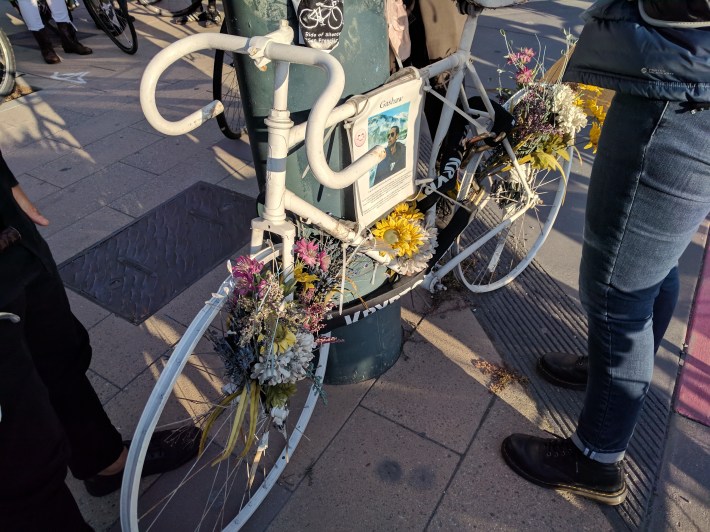
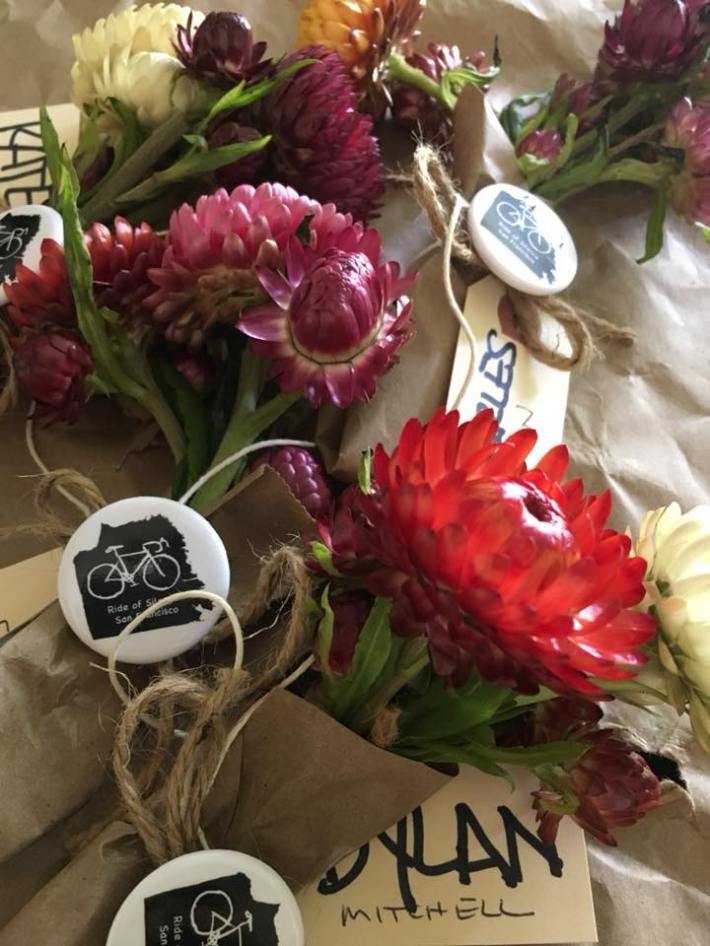
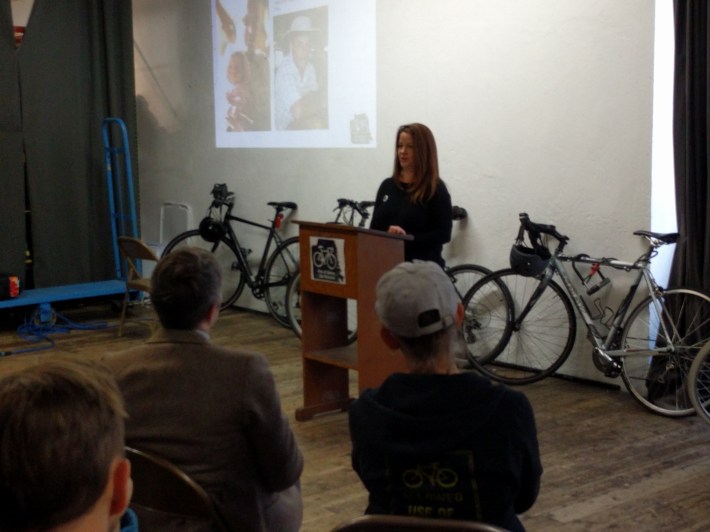
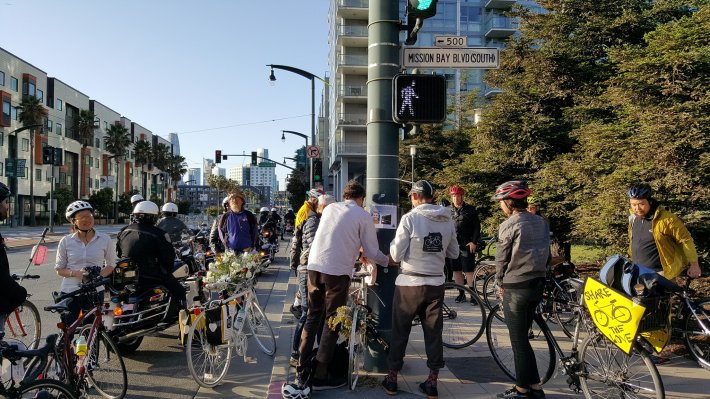
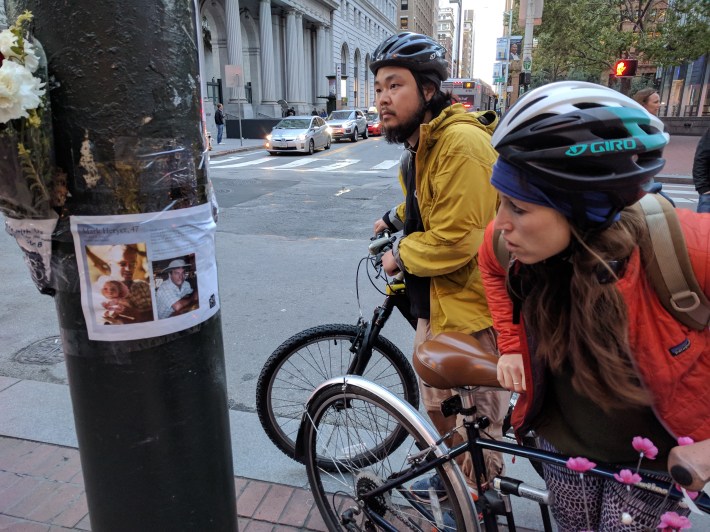
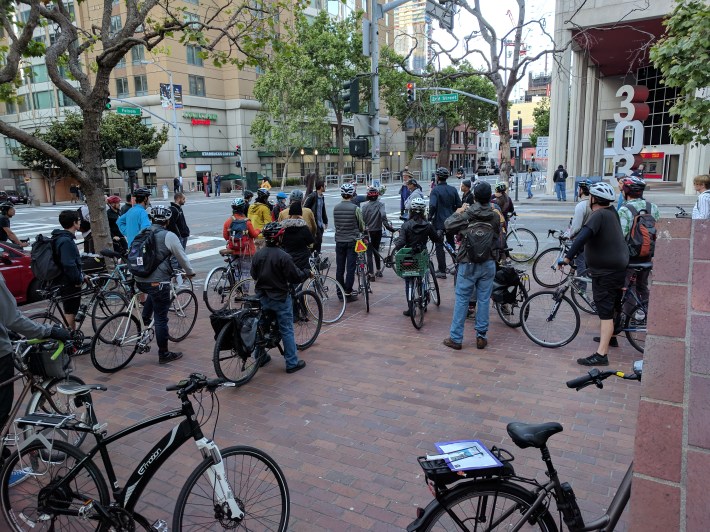
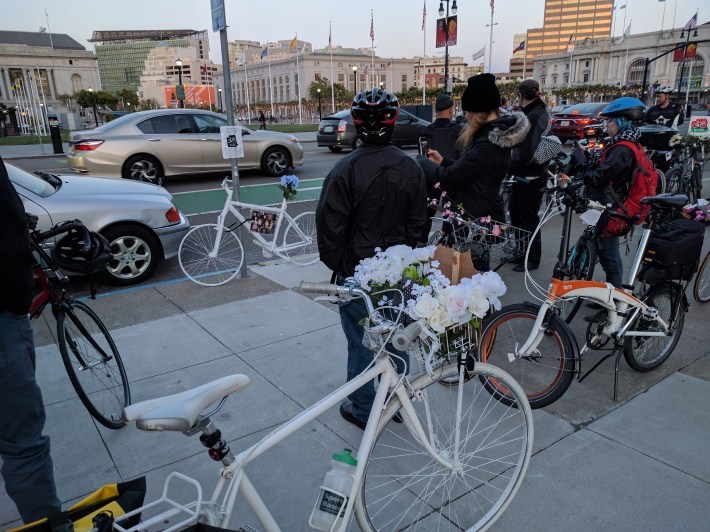
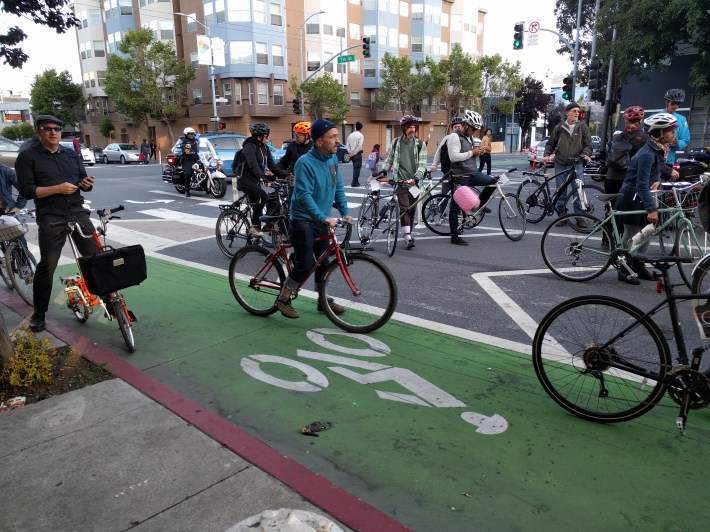
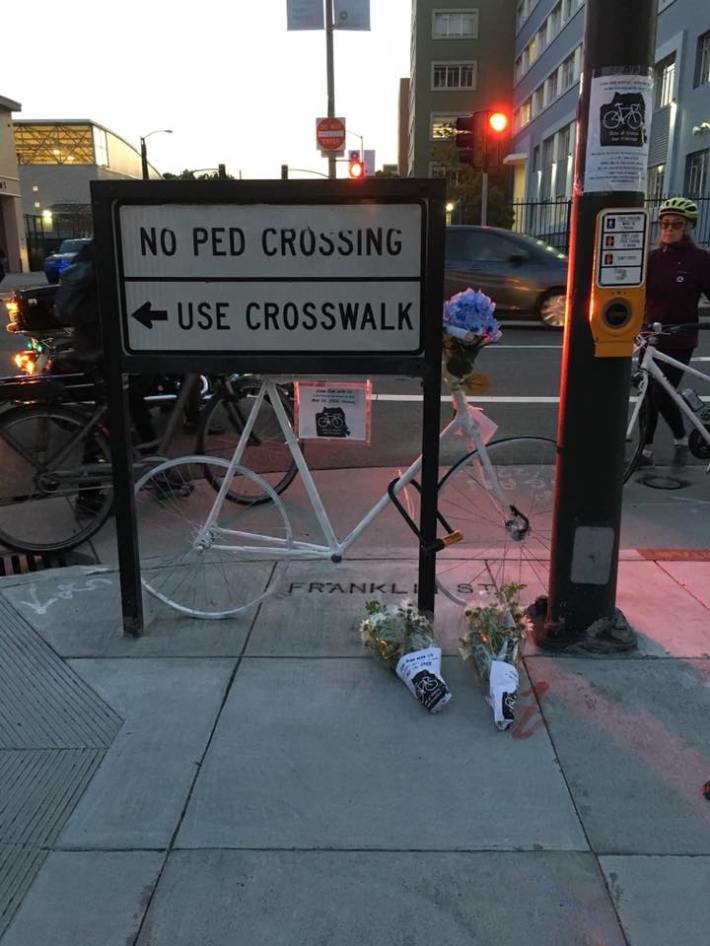
For a list of the fallen, see Patrick Traughber's Medium post.
